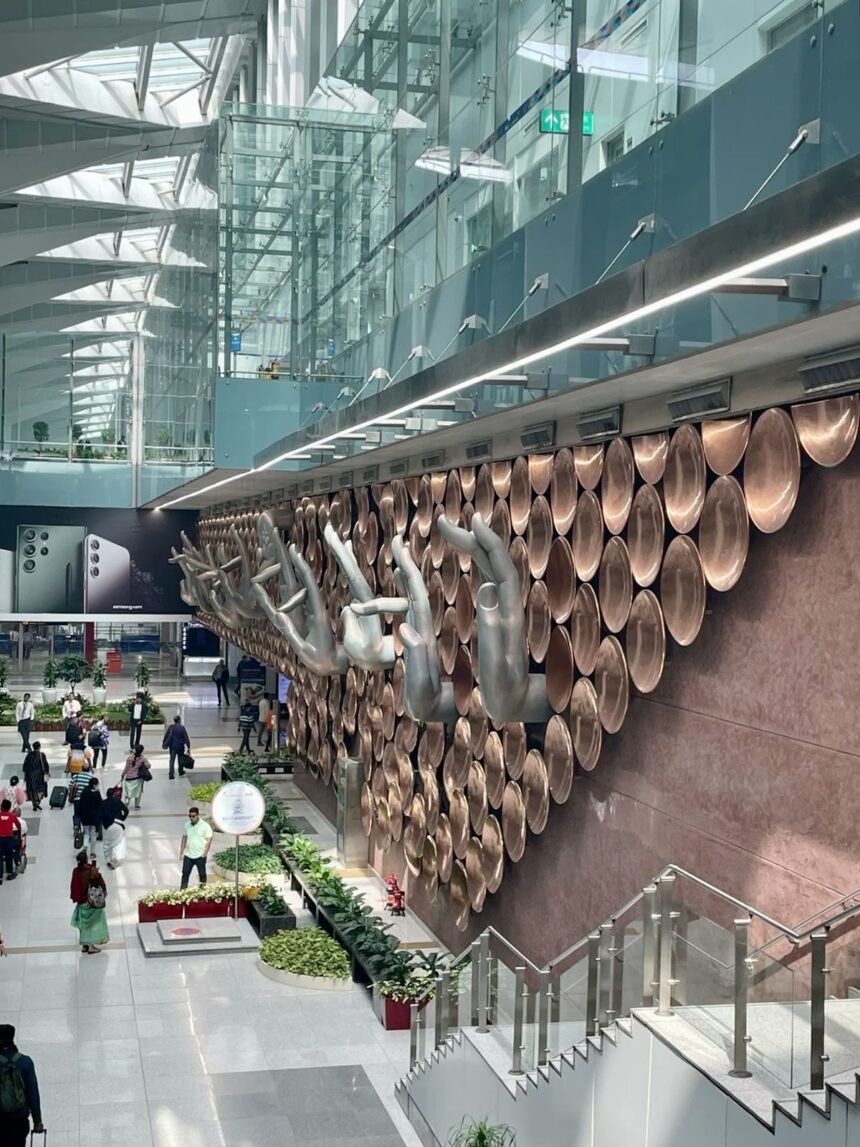Indira Gandhi International Airport: Overview
Indira Gandhi International Airport (IATA: DEL, ICAO: VIDP) is the primary airport serving Delhi, the capital of India. It is one of the busiest airports in India and a key gateway for domestic and international travel.
The airport is named after former Prime Minister Indira Gandhi and serves as a major hub for airlines like Air India, IndiGo, Vistara, and GoAir.
History of Delhi Airport
Originally established in 1962 to serve Delhi’s growing air traffic.
Major expansions in the 1980s and 2000s transformed it into a world-class airport.
In 2006, the airport was privatized and operated under Delhi International Airport Limited (DIAL).
Continuous modernization projects have made it one of the most advanced airports in Asia.
Terminals and Facilities
Indira Gandhi International Airport has three main passenger terminals:
1. Terminal 1 (T1)
Handles domestic low-cost carriers.
Features check-in counters, lounges, and retail outlets for passenger convenience.
2. Terminal 2 (T2)
Formerly used for international flights, now undergoing redevelopment.
3. Terminal 3 (T3)
One of the largest terminals in India, handling both international and domestic flights.
Equipped with modern lounges, restaurants, shopping areas, and advanced security systems.
Other Facilities
Cargo terminal for domestic and international shipments.
VIP lounges, transit hotels, and business centers.
Car rentals, taxis, metro connectivity, and bus services.
Wi-Fi, medical facilities, and services for differently-abled passengers.
Significance of Delhi Airport
Economic Impact:
Supports tourism, business travel, and trade, contributing significantly to the Indian economy.
Boosts employment in aviation, retail, hospitality, and logistics.
International Connectivity:
Connects India to over 80 international destinations, including the Middle East, Europe, North America, and Asia.
Strategic Importance:
Serves as a hub for defense, emergency, and diplomatic travel.
Regional Connectivity:
Connects Delhi to major cities across India, serving as a central hub for domestic aviation.
Passenger and Cargo Statistics
Handles over 70 million passengers annually, making it India’s busiest airport.
Cargo terminal handles hundreds of thousands of tons of goods annually, supporting trade and commerce.
Transportation and Connectivity
Metro Rail: Delhi Metro connects the airport to the city center and major urban hubs.
Buses: Delhi Transport Corporation (DTC) and private buses provide regular airport services.
Taxis and App-Based Cabs: Available for city and suburb travel.
Car Rentals: Available at terminals for self-drive or chauffeur services.
Recent Developments
Expansion of runways, taxiways, and aprons to accommodate more flights.
Introduction of state-of-the-art lounges and shopping complexes.
Modernization of baggage handling and security systems.
Efforts towards sustainability, energy efficiency, and green initiatives.
FAQs about Delhi Airport
What is the IATA code for Delhi Airport?
The IATA code is DEL.
Which airlines operate from Delhi Airport?
Airlines include Air India, IndiGo, Vistara, GoAir, Emirates, Qatar Airways, British Airways, and Lufthansa.
Is Delhi Airport the busiest in India?
Yes, it handles over 70 million passengers annually, making it the busiest in India.
How far is Delhi Airport from the city center?
Approximately 16 km from central Delhi.
Does Delhi Airport handle cargo operations?
Yes, it has a modern cargo terminal for domestic and international shipments.
Conclusion
Indira Gandhi International Airport is a world-class aviation hub and the gateway to India’s capital city. With modern terminals, advanced facilities, and extensive connectivity, it plays a crucial role in tourism, trade, business, and strategic operations. The airport’s continuous upgrades and modernization ensure it remains one of the most efficient and passenger-friendly airports in Asia.









Sta znaci pesak u bubrezima simptomi, koji simptomi ukazuju na problem i kako ga se resiti. Efikasni nacini lecenja i prevencije.